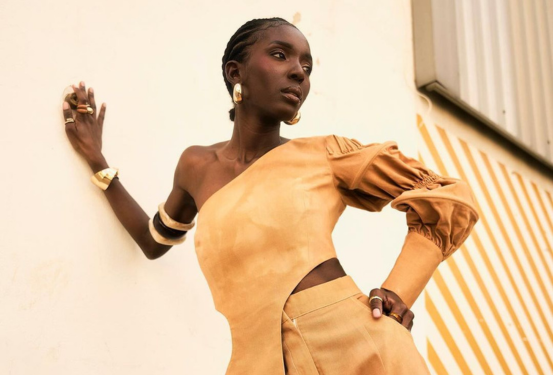Lebogang Mogul Mabusela is a multidisciplinary artist whose practice explores paper, ink and sculpture through a variety of formats and methodologies. They are the vessels through which she expresses thoughts, tensions and care with a hint of humorous narrative play. The outrage of the Black woman and calling out patriarchy, cis-heteronormativity and racism are central thematic focuses in her practice. The phenomena of objects, and their cultural and gendered attachments become vehicles for her critiques. This is all brushed lightly with influences from black science fiction and the desire to open up the imagination of her audience. Reflecting on her mediums (paper, monotype printmaking, installation, sculpture), Lebogang notes that, “these mediums allow me to invent my own craft, they are sort of tied to DIY culture”. Her self-taught technique of folding, colouring and gluing paper has allowed her to produce her own language and to begin to build a knowledge base around this form of working that makes sense within her creativity. She is drawn to how printmaking has been utilised in activism and how monotype printing permits the delicacy and tactility of surfaces to be represented in a different form and context. The doily is the object that Lebogang explores most deeply with monotype. She describes printmaking as clean, perfect and tight—and how this connects to the doily as a symbol of respectability politics and instructions on how women should behave.

photograph by Nkhensani Mkhari
“There is a tension between the one domestic and the other professional male dominated site, the monotype process is the scissors that cuts the tension between clean and messy by allowing a more uncontrolled and a little messier interpretation of a doily”. The use of paper also becomes strategic, particularly when looking at the guns and technology that Lebogang crafts by hand to stand for Black women’s anger. The fragility of paper is balanced by the recognition that these creations are weapons allowing them to be read as symbols of strength and gentleness simultaneously—thus undermining the falsified tropes projected onto Black women. Forming guns out of a fragile material also points to ideas around a false sense of security. Installation becomes the theatre in which these various considerations come to life, with Lebogang enacting faux commercial dealings or moments where the guns prompt the performance through an exchange of questions and answers between her and those who are curious about her guns. I had a chat with Lebogang to find out more about her practice and to create space for her to shed some light on the works that appeared in two of the viewing rooms at this year’s Turbine Art Fair.
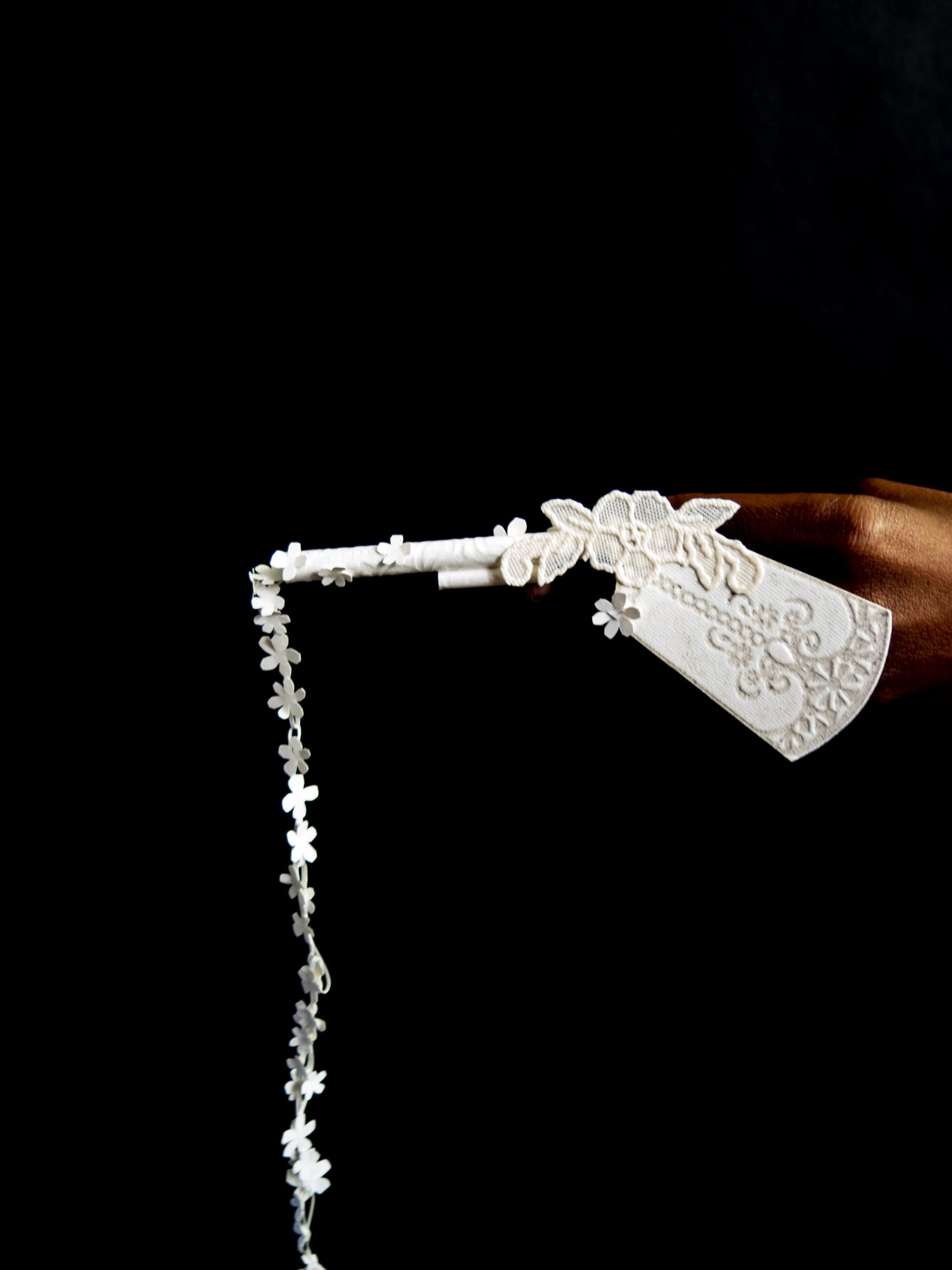
photograph by Nkhensani Mkhari
How do you like to describe your artistic practice and the work you produce?
I create monikers for myself – Monotypebabe, Printmaking Princess and Zinequeen. I love to think of myself as the Shuri of Makoti Technologies™, and that paper is my vibranium and my studio, a lab, where I play Stevie Wonder instead of gqom haha. I pride myself in being a designer and inventor of tools and technology that roast and dismantle patriarchy, where I dub these as gunz and sell via a Bridal outlet, while I make prints informed by doilies that serve as a backdrop for the outlet—both physically and figuratively.
In 2017 you established Makoti Technologies™. Could you share more about this bridal shop (the concepts, what inspired it, who do you see as the “purchasers” for these guns)? How does Makoti Technologies™ relate to the other aspects of your practice?
I think my work can be a little straightforward and on the surfac;: being a woman in Satafrika “gwa ngena, gwa khinya”; us collectively “I hate it here”, therefore “I wish I could buy a gun” or something more tender! When you encounter my practice you can see that it is a reaction towards something that affects and threatens Black women. The first prompt for the Bridal shop, was a Sepedi-setswana proverb “mosadi o tshwara thipa ka bogaleng” and here this is a Black feminist proverb that means valour, sacrifice and superwoman strength. There is an irony in that saying, it is also similar to the “wa thinta bafasi wa thint umbokoto” then. In recent years these manifested into the Black girl magic trope too. these beautiful proverbs come from a wonderful place, from an acknowledgment of our agency and survival-hood through rendering us as superwomen—thus a superhuman, and to be a superhuman is also to he a subhuman. Not really human, this causes harm and denies Black women nurture and softness. My supervisor was suggesting I do something with found knives and “mosadi o tshwara thipa ka bogaleng”, I thought to myself no… let me interrogate this, I laughed and realised that being a mbokoto or holding a knife by the sharp side is like arming yourself with a paper gun. Heck even a real gun to be honest. I want to entice everyone with my work, I want to entice a boyfriend to see a cartier-esque ad, post of a Makoti gun and see the words “Msoon Wurcko” and think yep my gurl will need that. Or a mother to see my “bleed on his car seats” gun or print and say sure my daughter’s body will appreciate this. Or even a corporate space to secure their buildings with a Stealetto in the lobby.
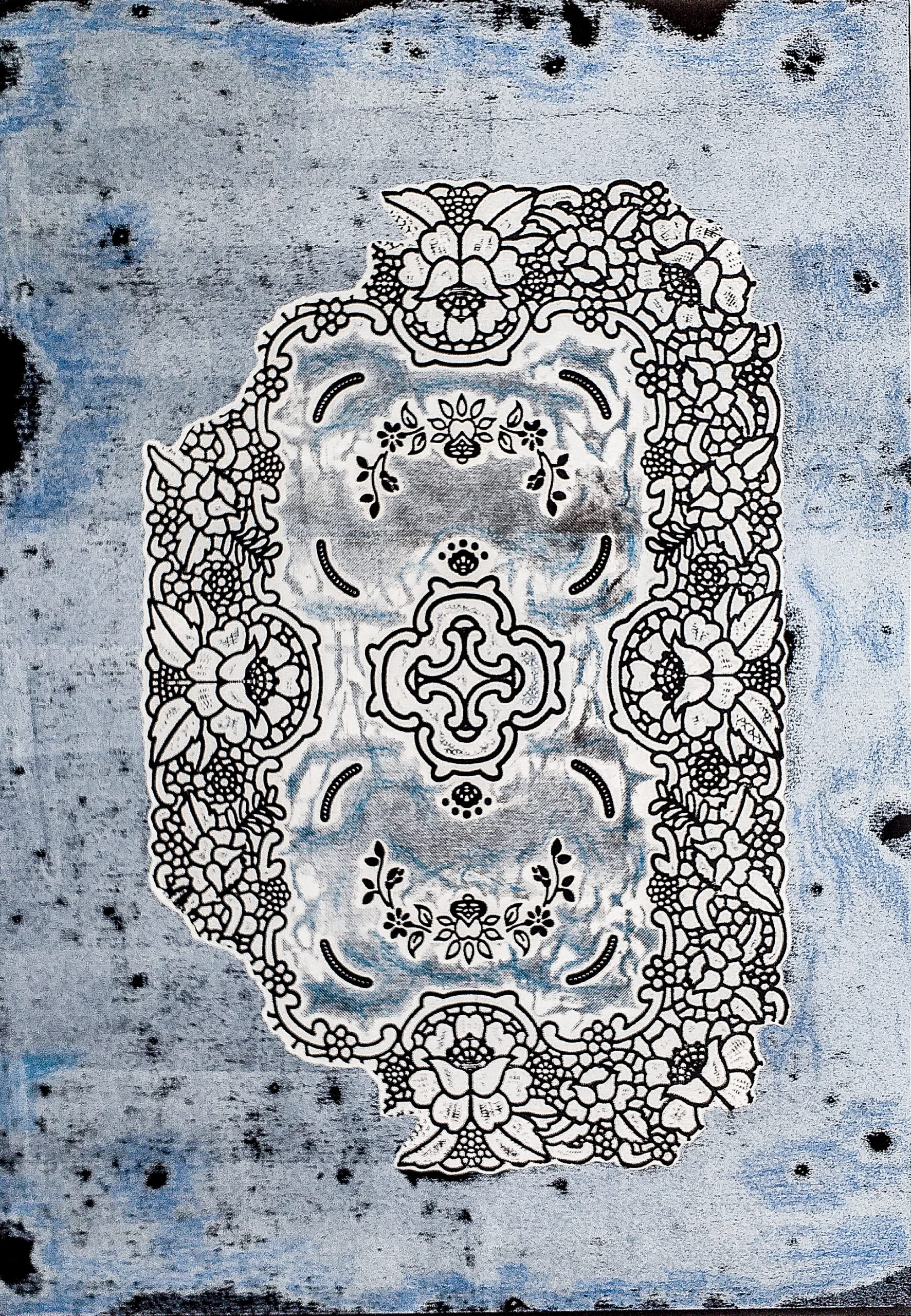
The story they told about you
Your work is included in two of the TAF viewing rooms this year. Could you please share more about the monotypes and guns included in Tactile Visions – Woven?
The monotypes in the work serve as a backdrop to the Bridal shop but also who am I kidding? My work is conceptual so having prints in my practice also helps my business. They also explore the doily, known also as a placemat. I have seen doilies used as ornaments and centrepieces in our Black homes, we know women also made and designed them. These objects are also associated with an economy to them, used in buttering systems in the community and to sell them, however, in my work I use the mass produced Taiwanese Vinyl lace doilies I buy from Oriental Plaza. Doilies are also a symbol of respectability, gender norms, cleanliness, perfection and a maintenance of joy and servitude. These beautiful works of art/crafts that make me go wow, are so sinister to me. In my work, I interrogate this inspired by Sara Ahmed’s critique of objects in her book Signs. The doily stands [in place of] the body of a feminist killjoy; a wilful woman and also just a flawed normal human being. These works also speak to what happens when a killjoy starts calling out patriarchy and racism in spaces of happiness, like the dinner table, movies, songs or even in the fucking work place.
In the two monotypes I printed, the first The story they told about you, is a normal first pull from the press and the second one titled What is Left after They Tell You about You, is a ghost print to the other—both have two colour layers, black ink and light blue ink, to demonstrate the consequences of being the Wilful Child. The process of using ghost prints in my work was last demonstrated in 2018 for the WYAA, where I intentionally printed ghost prints. A monotype is different from the other printing techniques as it does not yield an edition. You can only get a once off image, and if you print again on the same plate you get a lighter image of the other [which is then] called a ghost print—some call it an offset print. In these monotypes I was revisiting that process in centring ghost print monotypes to depict “dipoko tsa bo wilfulness”. There was also an inclusion of three gunz, each from different range… The process of manufacturing a makoti product includes having to create product shots of the gun and gifs out of it so it can live in the digital realm and also be an advert. A user manual is also custom made for each gun in the form of a zine that includes writing and illustration. This user manual is very important in the work as I am not only selling a sculpture, but also a concept, a Makoti Technology is a conceptual piece after all.

photograph by Nkhensani Mkhari
Could you please share more about the paper sculpture installations included in RMB Talent Unlocked 2020?
I was very lucky and fortunate to be called back to be in this year’s iteration of the RMB Talent Unlocked programme, being given a chance to up my work a little bit. In this work I created the makoti guns again, featuring more intricate elements. The spectre of a bridal shop selling guns and its radicalness, inspires me to make gunz that are spectacular. All makoti gunz are wearable on the left hand and the finger guards are made to fit the hand in a certain way. What is different about them is that they have flowers flowing out of them—down to the floor into a pile—however, they are still adorned by doily cut outs and are still made from paper, further emphasising softness, sensitivity and [bringing closer attention to] the strong Black woman trope by [the symbolic association flowers have with] mourning and romantic or loving gestures. In my language a flower is Sethunya and sethunya is also a gun, when that flowering plant starts to bloom we say “ya thungya”. one could say that my guns previously were just a plant, and in this particular exhibition showcasing my regrowth as an artist—this is that chapter where the guns start to fire; they are becoming bigger and no longer need me to perform as an arms dealer for them because they become installations [in unison] with the flowers touching the surrounding surfaces.
Are you working on anything at the moment that you would like to share with our readers?
After having my newly acquired press and printing supplies, and being able to print small without feeling limited—this made me think of how there are other artists I can invite to print small scale too and thus a project titled 9/10 as in nine out of ten [started being conceptualised]. I will be working with these artists on a Printer x Artist collaboration and beyond. [These being artists] who I feel have powerful imaginations and will work really well with the medium of printmaking and on a small scale too. They are Nono Motlhoki , Puleng Mongale, DuduBloom , Khanyisile Mawhayi, Nompumelelo Sambo, Yolanda Mazwana, Mankebe Seakgoe, Zandile Tshabalala and myself. A fellow artist Zandile Tshabalala posted the 8 of us on her Instagram, dubbing us all as her current faves and I decided to go with that for this experience. This is my response, to draw further and invite these artists to make prints with me for free, towards an exhibition and a publication. 9/10 also refers to the fact that there are nine of us, it is also a scoring/grading or rating which means this title is a sassy potent flex. The project will be broadcasted on my Insta page overtime as it is happening.
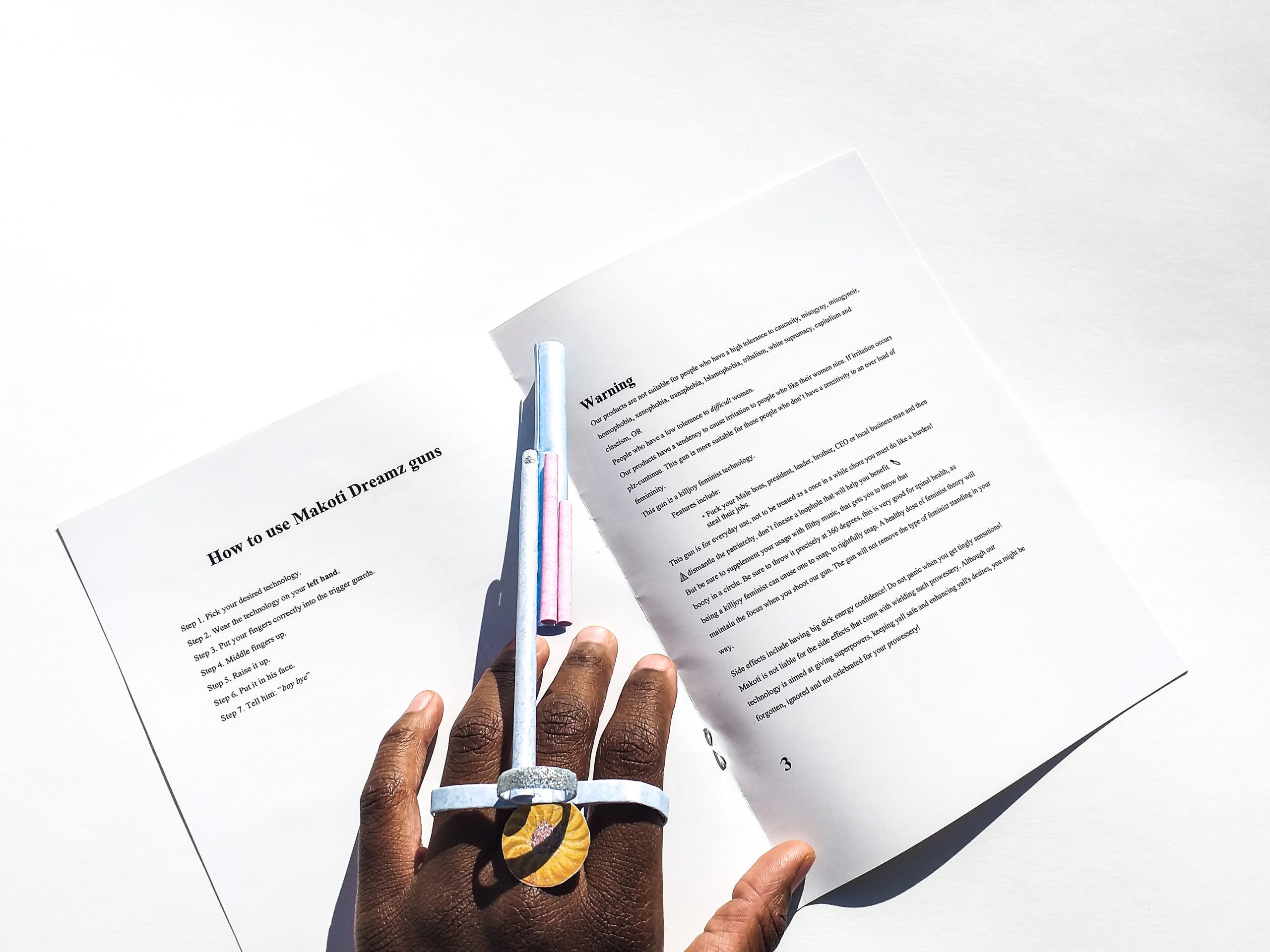
Stealetto
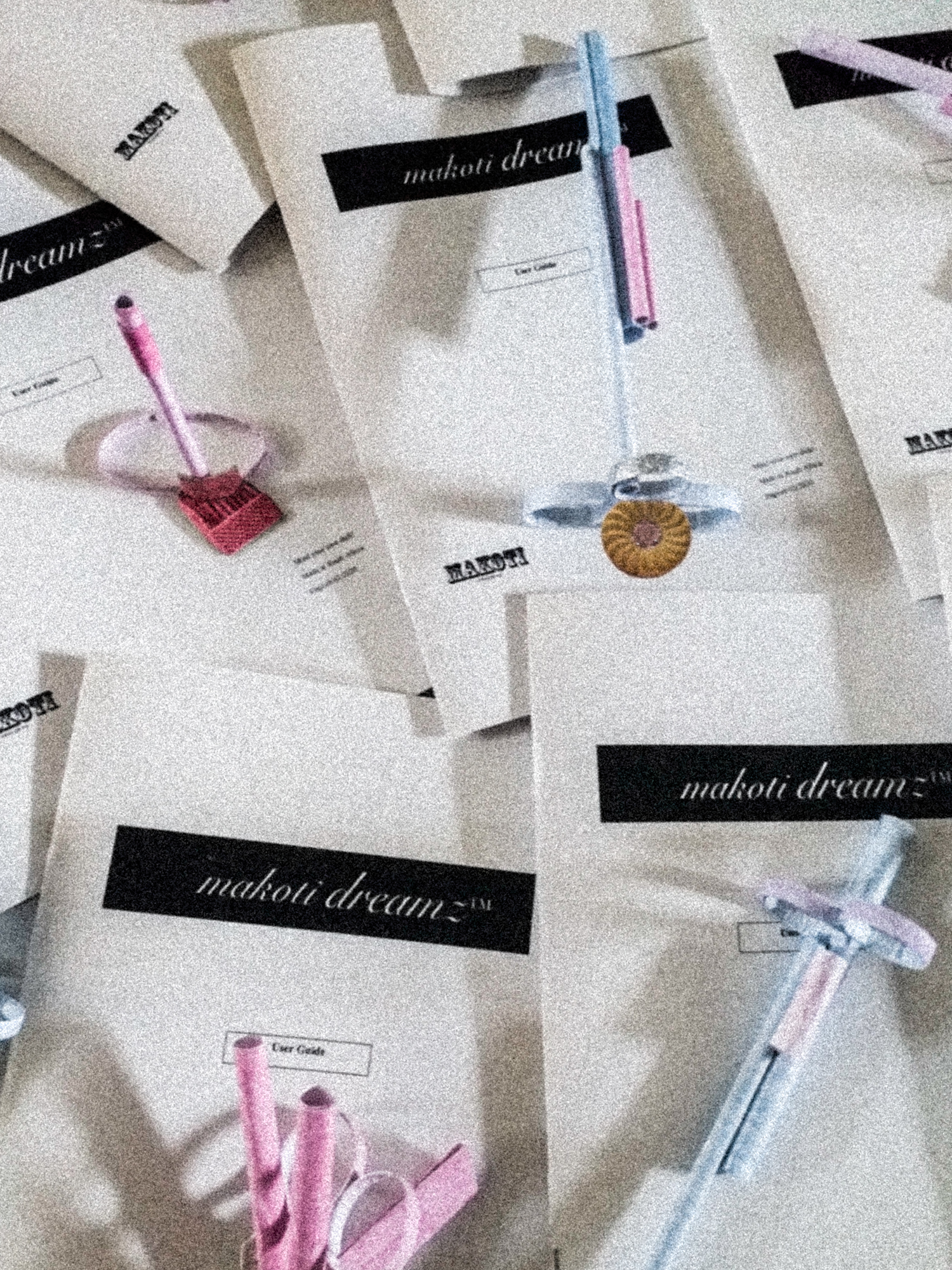
Makoti-gunz



















































